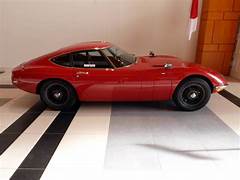
For car enthusiasts, building a personal collection is more than just a pastime—it’s an expression of passion, personality, and sometimes even a glimpse into automotive history. But how many cars should one aim to include in their collection? While the answer varies for every individual, there are several factors to consider, from budget and space to personal goals and emotional attachment.
The Starting Point: Passion and Purpose
Every car collection starts with a purpose, and understanding that purpose is key to determining its size. Are you focused on curating a specific era, brand, or type of vehicle? For example, a collection dedicated to American muscle cars might focus on iconic models like the 1969 Ford Mustang Boss 429 or the 1970 Chevrolet Chevelle SS. Alternatively, a collector with a love for European luxury cars might pursue vintage Rolls-Royce or Porsche models.
The scope of your passion often dictates the number of cars in your collection. Someone with a niche focus may keep their collection small and refined, while a broader interest might naturally lead to acquiring more vehicles over time.
The Role of Space and Storage
Practical considerations like storage space play a significant role in determining the size of a collection. Each car requires adequate shelter to maintain its condition, whether it’s a climate-controlled garage or a specially designed storage facility. For those with limited space, focusing on quality over quantity is often the best approach.
Storage costs are another consideration. Maintaining a large collection can be expensive, especially if the vehicles need regular maintenance, detailing, or restoration. Many seasoned collectors recommend ensuring each car in your collection has a proper space before acquiring the next.
Balancing Budget and Investment Potential
The financial aspect of collecting is perhaps the most influential factor in deciding how many cars to own. Classic and exotic cars can be significant investments, with purchase prices ranging from a few thousand to millions of dollars. Beyond the initial cost, maintenance, insurance, and registration fees add up quickly.
However, car collecting isn’t solely about spending money; for some, it’s also about smart investing. Certain classic cars appreciate in value over time, making them both a passion project and a potential financial asset. Collectors often advise striking a balance—choosing cars that bring joy while being mindful of their investment potential.
Quality vs. Quantity
One of the age-old debates among car enthusiasts is whether it’s better to have a small collection of high-quality vehicles or a large assortment that spans various types and conditions. A smaller collection allows for more focus on the details, ensuring each car is meticulously maintained and driven regularly. On the other hand, a larger collection offers variety and allows for a more comprehensive exploration of automotive history.
The Ideal Number
Ultimately, the ideal number of cars in your collection depends on your personal goals. For some, owning three to five cherished vehicles is enough to satisfy their passion. Others might aim for a dozen or more to explore different makes, models, and eras. There’s no right or wrong number—what matters is that each car holds value to you, whether it’s emotional, historical, or financial.
Conclusion
The size of a personal car collection is as unique as the individual who curates it. From one treasured classic to a garage full of automotive gems, the key is to build a collection that brings joy, reflects your passion, and aligns with your resources. After all, a car collection isn’t about numbers—it’s about the stories, memories, and connections that each vehicle represents.